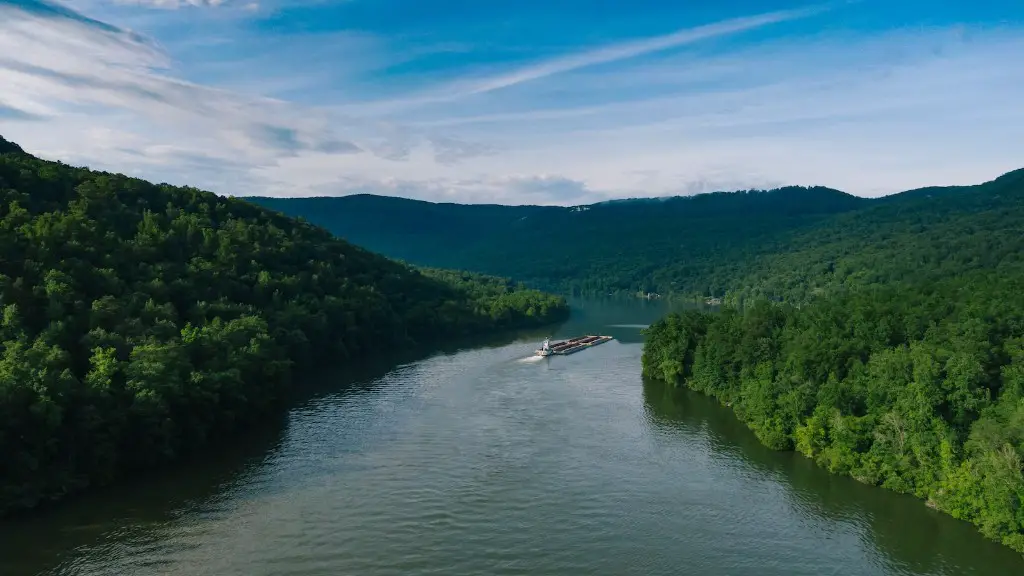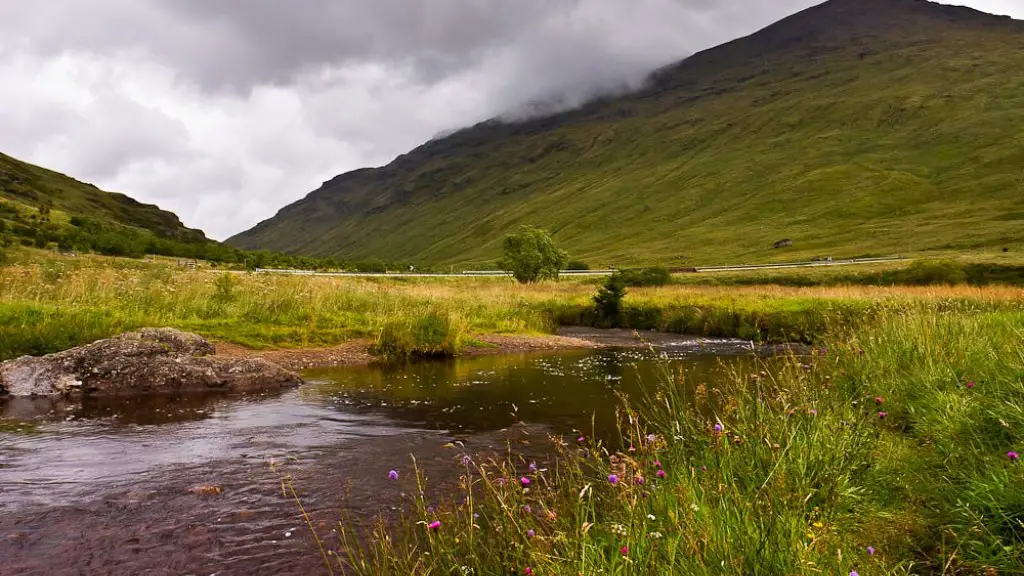The Mississippi River is one of the most iconic and storied water bodies in the world. It’s a major artery for commerce, an important water source for 10 states, and a vital part of North America’s ecology. But what happens when the river reaches its destination and pours into the Gulf of Mexico? Does the Mississippi River mix when it hits the ocean?
The answer is no, the Mississippi River does not mix with the surrounding waters of the Gulf of Mexico. The river continues to flow into the Gulf as a distinct “river in the sea” for approximately 150 kilometers, before the fresh water is completely diluted and mixes completely with the saltier waters of the ocean. This phenomenon is known as a “river plume” and is a common sight off most major rivers.
The Mississippi River’s unique environment and sediment-rich waters form a barrier between itself and the surrounding ocean. As the river moves further into the gulf, the salt content of its waters gradually increases, eventually reaching a tipping point where the river plume is no longer visible. At this point, the two water bodies mix and become indistinguishable from each other.
There are many factors that contribute to the phenomenon of the Mississippi River’s riverplume. One of the most important is the Mississippi River’s large watershed, which covers some 1.7 million square miles, much of which drains into the Mississippi River system. This leads to higher concentrations of sediment and organic matter in the Mississippi River than other rivers and creates a kind of “buffer” between the river and the ocean.
Tides also play an important role. As the tide moves up and down along the Gulf coast, the eddies and currents created by the tide move the sediment-laden Mississippi River plume in different directions, sometimes allowing it to travel further into the Gulf and other times bringing it back toward shore. This means that the Gulf of Mexico is constantly being exposed to a variety of different sediment and nutrients coming from the riverplume over time.
The Mississippi River plume also affects ocean life in the Gulf of Mexico. The sediment carried in the plume helps support marine life by providing food and habitat, while the plume itself helps protect gulf species from wave action, wind, and storms by cutting off currents that can bring in predators and cold water. The plume also helps balance the ocean’s saltwater with fresh water, helping to keep the ocean in a healthier state.
In short, the Mississippi River’s riverplume is an important part of the life of the entire Gulf of Mexico. Without it, the Gulf would be a much different place, and it’s effects are felt far beyond the immediate area of the river.
The Affect of Human Activity on The Plume
The river plume of the Mississippi River is strongly affected by human activities. The river and its watershed are heavily affected by agriculture, urbanization, and pollution, while coastal development has caused changes in the Mississippi river plume. A study carried out in 2002 found that the area affected by the Mississippi River plume had increased by 35% over the previous 20 years.
Agricultural activity along the river and in the watershed can cause sediment and agricultural chemicals to be carried downstream in the riverwater, increasing the sediment content of the river plume and further increasing the size of the plume. Urbanization, often caused by coastal development and the building of dams, can also have adverse effects on the river plume. As cities and dams are built in the river’s path, the force of the flowing water is reduced and the effectiveness of the plume is decreased. Pollution from industrial and other sources can also contribute to the river plume’s growth, as sediment and chemicals find their way into the Mississippi River.
These factors can have a profound effect on the plume and its ecosystem. The increased size of the plume can lead to a decrease in the oxygen content of the water that can harm fish and other wildlife. The presence of sediment and agricultural chemicals can disrupt the balance of the freshwater and saltwater, while industrial pollutants and other contaminants can cause even greater harm to the marine environment. Ultimately, the human impact on the river plume can be quite damaging and must be closely monitored.
Implications of a Non-Mixed Waterbody
The presence of the Mississippi River plume has wide-ranging implications for both the river and the ocean. For the river, the distinct flow of the plume can help protect it from ocean waves and storms, while the sediment-laden plume can help to control the buildup of silt along the shoreline. In the Gulf of Mexico, the river plume can provide a place for larvae and eggs to develop and for species to feed and flourish, helping to make up for the lack of other food sources available in the Gulf. It also provides a source of fresh water that helps to balance out the salt content of the ocean and can help to prevent dangerous algal blooms.
In addition, the river plume also serves as a vital buffer between the open ocean and the shallower waters near the coast. This buffer zone helps to regulate the exchange of nutrients and sediments between the two waterbodies, allowing coastal species to thrive in this area. This exchange can be especially important in times of drought, as the Mississippi River plume can help to bring vital nutrients and water to the shallower waters of the Gulf and its species.
The Mississippi River plume is an important part of the ecology of both the river and the ocean. It provides a number of benefits, from helping to protect the river from storms to providing a vital source of food and shelter for coastal species. However, the effects of human activities and pollution can also have a detrimental impact on the plume, and it is important to monitor and manage these factors to ensure the health of the entire ecosystem.
How Is The Plume Monitored?
The Mississippi River plume is monitored by a number of agencies and organizations. The National Oceanic and Atmospheric Administration (NOAA) collects data on the plume on a regular basis, as do the United States Geological Survey (USGS) and the Environmental Protection Agency (EPA). These organizations analyze the data and use it to better understand the river plume and its effects on the river and the ocean.
Satellites are also used to monitor the plume, allowing scientists to better understand the plume’s size, depth, and direction. This information can be used to determine the areas most at risk from storms, incoming pollutants, and other factors. It also helps to identify areas that are likely to be affected by the plume, allowing for better management of the river and its ecosystem.
In addition, scientists also use on-the-ground monitoring and research to better understand the Mississippi River plume. This research focuses on studying the plume’s composition, movement, and effects on the surrounding environment. This data can then be used to inform management strategies and help ensure that the plume is not adversely affected by human activities.
Conservation and Management Strategies
There are a number of strategies and actions that can be taken to better manage and conserve the river plume and its ecosystem. One important strategy is to reduce the impact of human activities on the river, particularly through reducing the amount of pollutants and chemicals entering the watershed. This can be done through improved agricultural practices and improved water management strategies.
Another important strategy is to preserve and protect the wetlands and marshes adjacent to the river. These areas provide a critical buffer between the river and the ocean, as well as a home for many species of birds, fish, and other wildlife. Conserving these areas is essential for ensuring the continued health of the entire ecosystem.
The government can also work to restrict development along the coast, as the presence of urban areas can disrupt the flow of the river plume and damage ocean habitats. This can be done through creating protective buffers of undeveloped land that can help reduce the impact of coastal development on the river plume.
Ultimately, the protection of the Mississippi River plume is essential both for the health of the river and for the health of the entire Gulf of Mexico. The strategies and actions outlined above can help to ensure that the plume is protected and preserved for generations to come.





